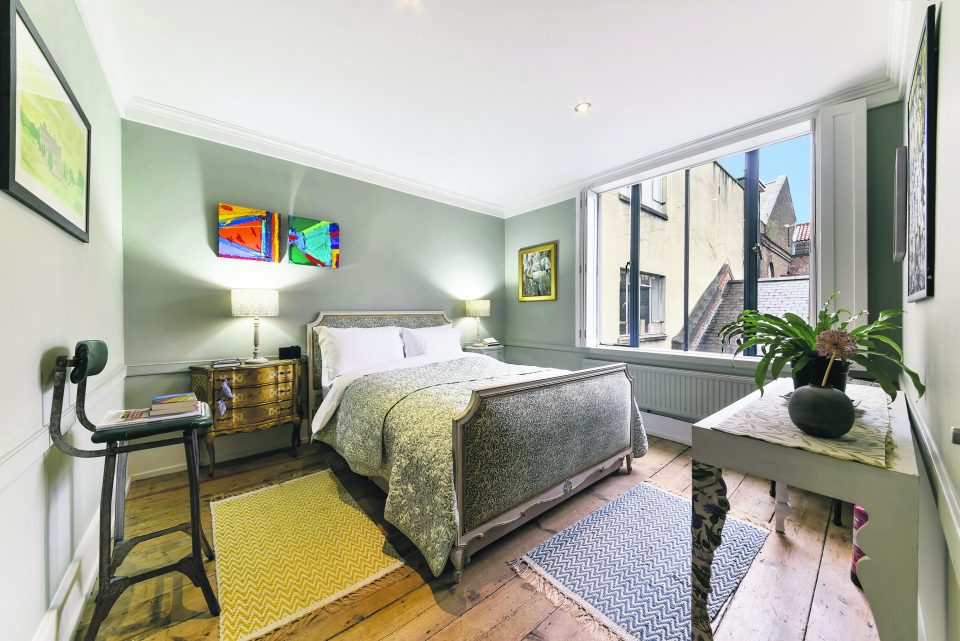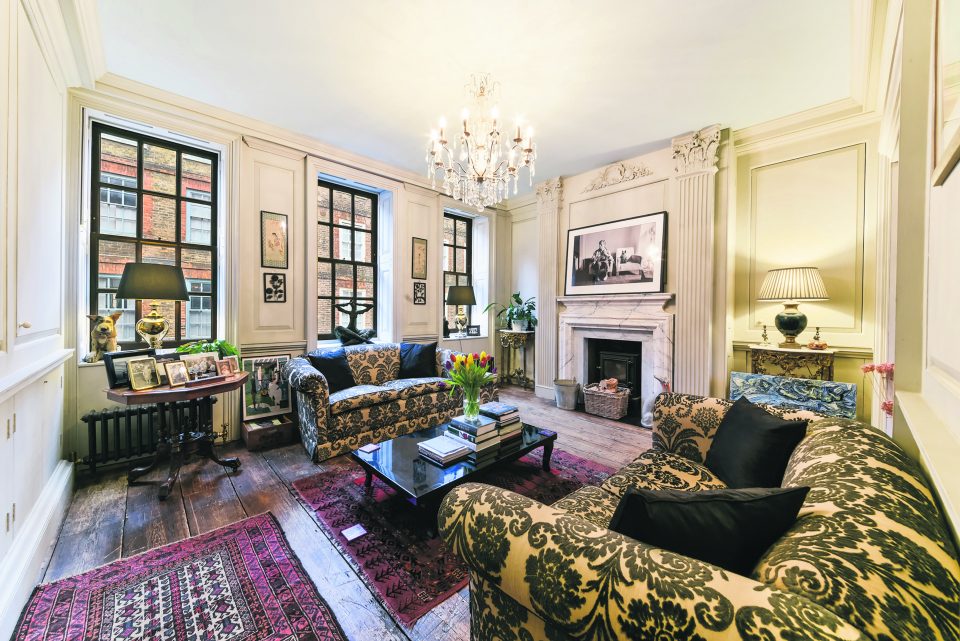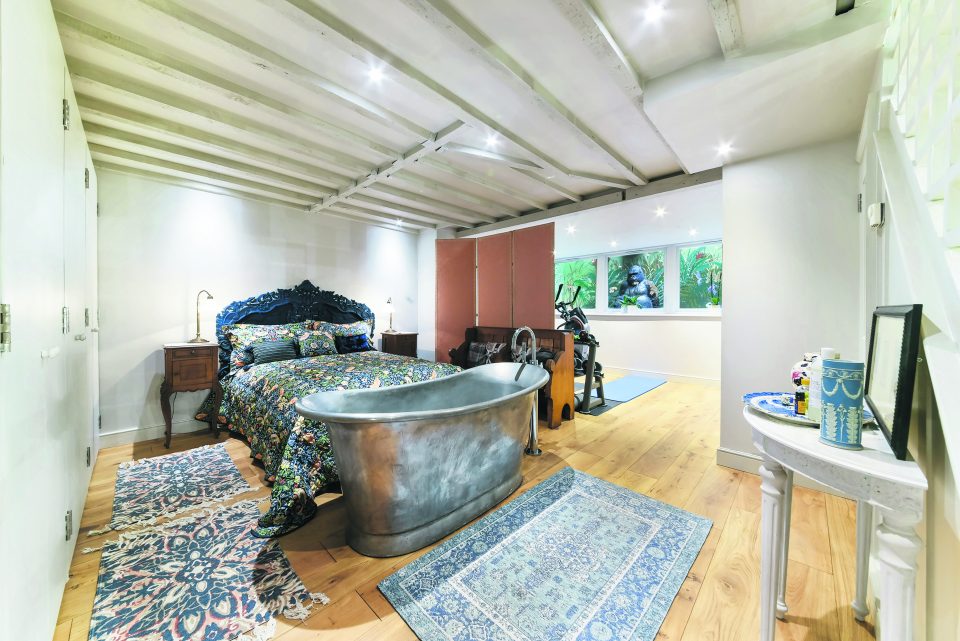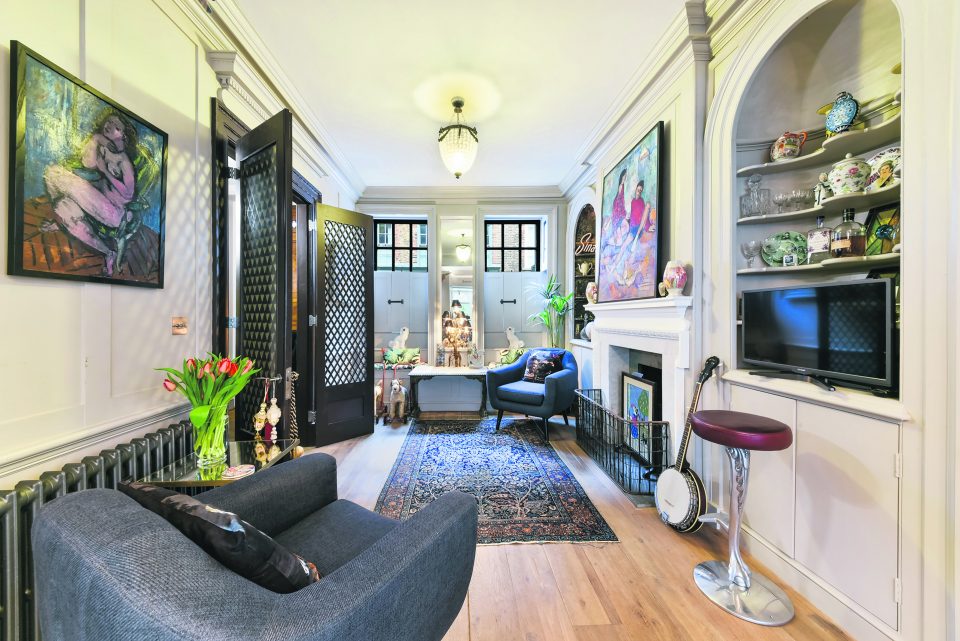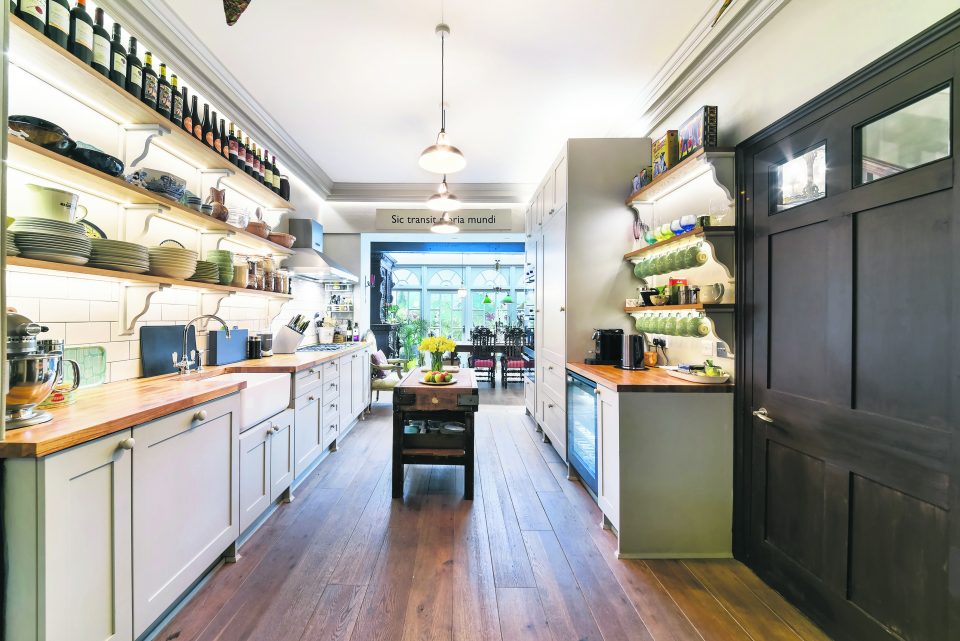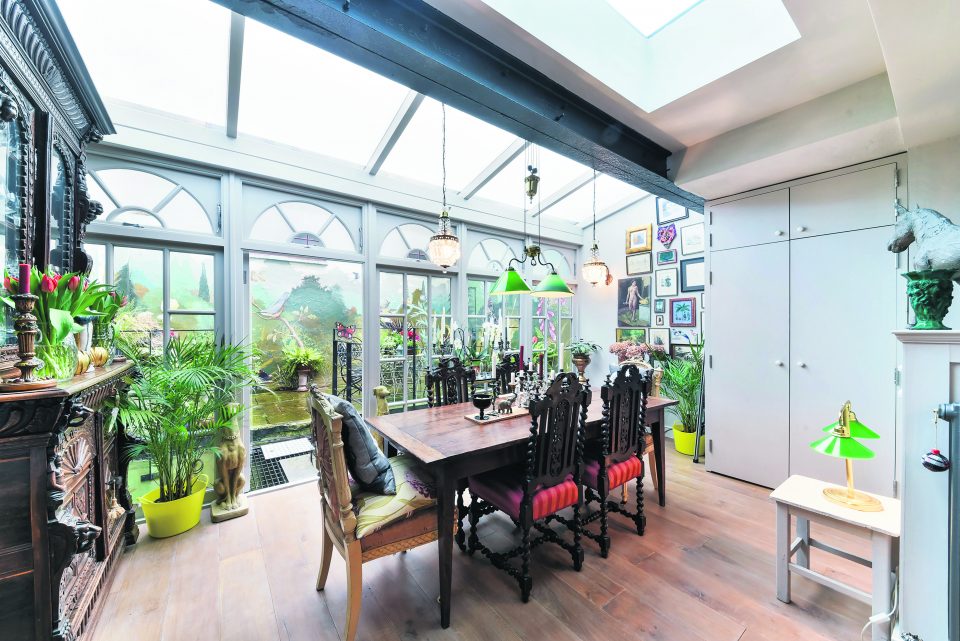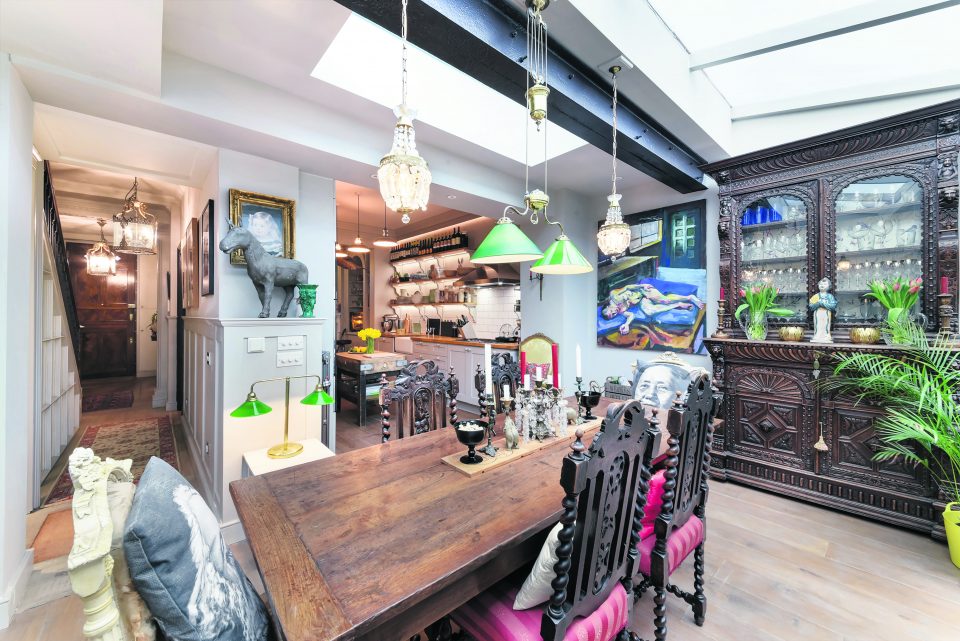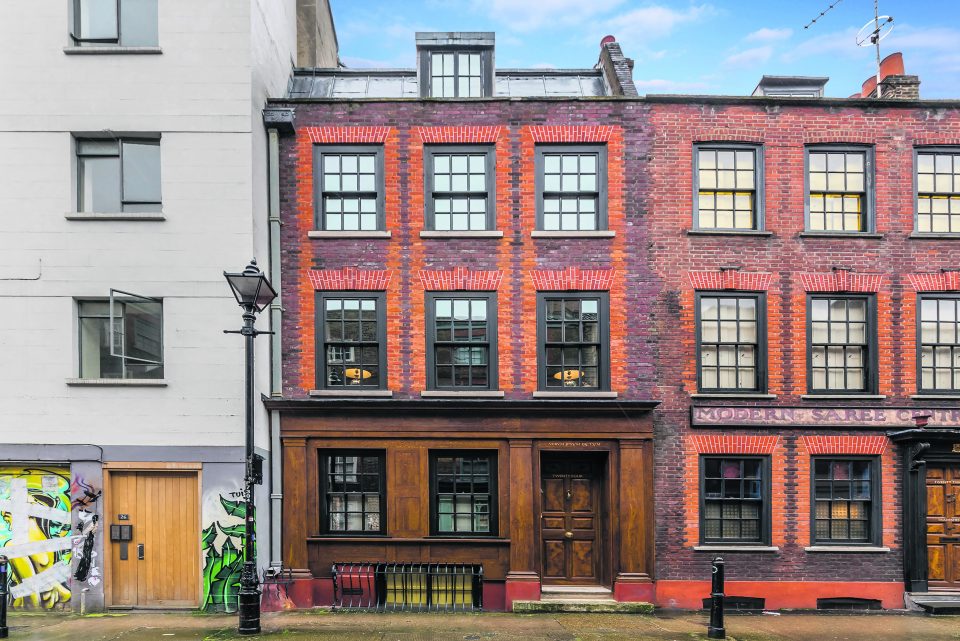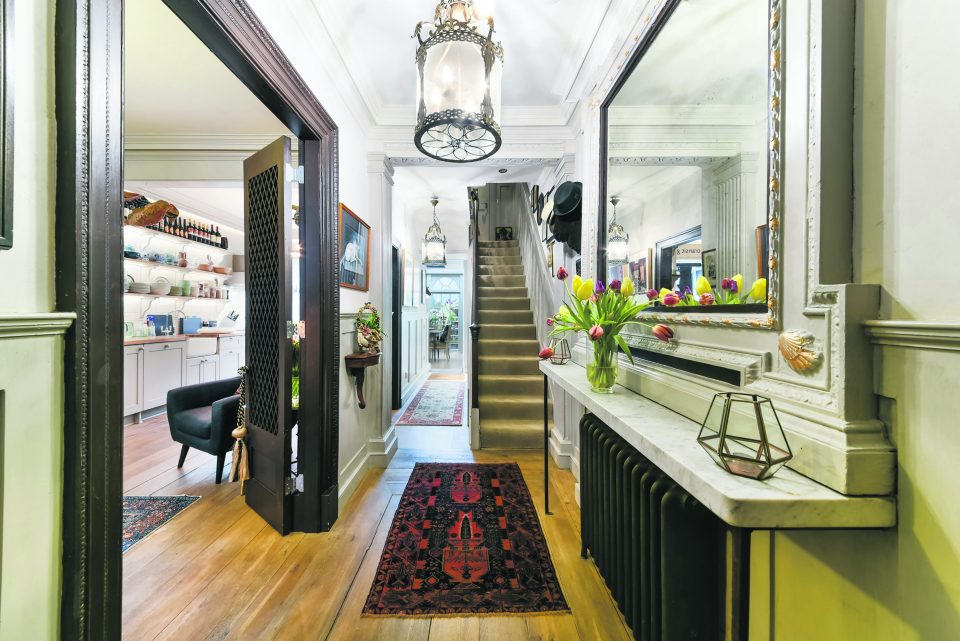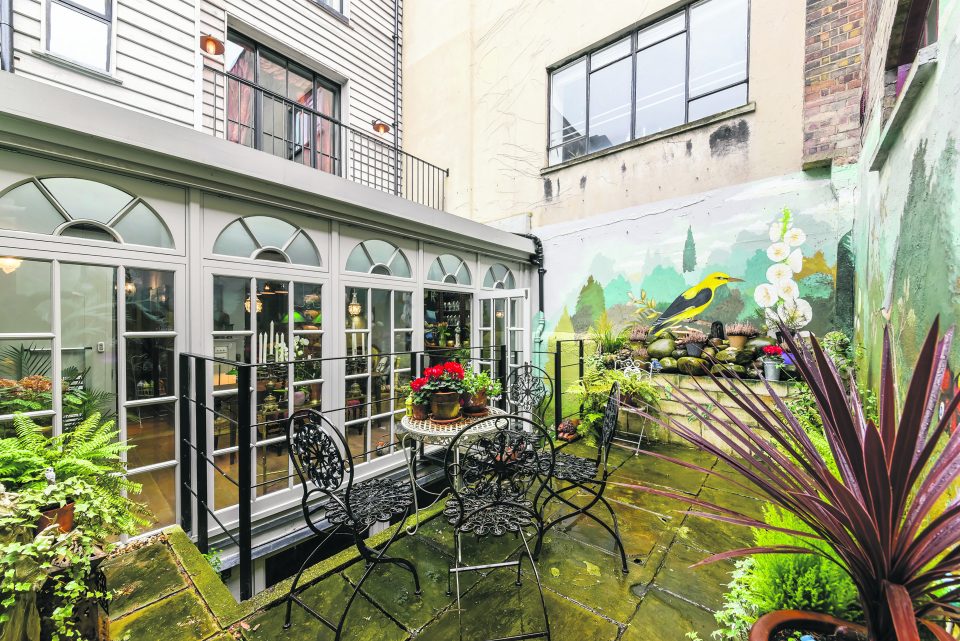Property of the Week: A Huguenot home in Spitalfields with a unique Rousseau rendition

Wander a little beyond the balti houses and beigel shops of Brick Lane, and you’ll soon come across the Spitalfields Conservation Area.
These narrow, relatively secluded residential streets offer a glimpse into the old East End, and are home to some of the best examples of early Georgian-era townhouses in central London.
The rows of red-brick properties with their distinctive sash windows mostly began life as the homes of the wealthy French Huguenots, who first brought their silk weaving skills to London in the early 1500s.
Built in the early 18th century, the houses have plenty of history behind them and have seen many different iterations – perhaps none more so than number 24, which has just come on the market with Knight Frank for £3.1m.
The four bedroom, three bathroom property started life as the home of a Huguenot doctor, who would probably have treated members of his community from the house itself.
The next historical record of the home is in the 1940s, when parts of it were devastated by an intense vibration from a World War II bomb that fell nearby.
This meant that it needed to be completely rebuilt, and instead of becoming another house, it was remodelled to create workshops, at a time when the East End was still the centre of the rag trade and manufacturing in London.
Rousseau rendition
Fast forward to 1997, and the architect Chris Dyson bought the property from a manufacturer of leather coats. He completely redesigned it to turn it back into a family home, completing the project in 2011.
The façade of the house was returned to its original 1725 design, complete with timber sash windows and decorative brickwork.
The current owner has also added their own flourishes to the property, putting in a rear extension, hidden bathrooms and a self-contained guest suite.
But the most striking addition they have made is the garden mural, which was painted by artist Ian Harper. It is based on Henri Rousseau’s painting The Dream, but the exotic birds and plants in that work have been replaced by ones that are native to the UK.
Because it was remodelled in the 1940s, the house is not listed like many other homes on Princelet Street. This means the new owner would have the possibility of adding a new chapter to the house’s already storied history by making their own alterations.
“You have got the best of both worlds,” says Simon Boulton of Knight Frank. “It’s not listed, but it is in the Spitalfields Conservation Area which is great, and it still has the same feel and vibe as a period property.”
Boulton adds that homes in the sought-after conservation area come up “very rarely” – so if you want to become part of the history of this fascinating property, don’t hang around.
